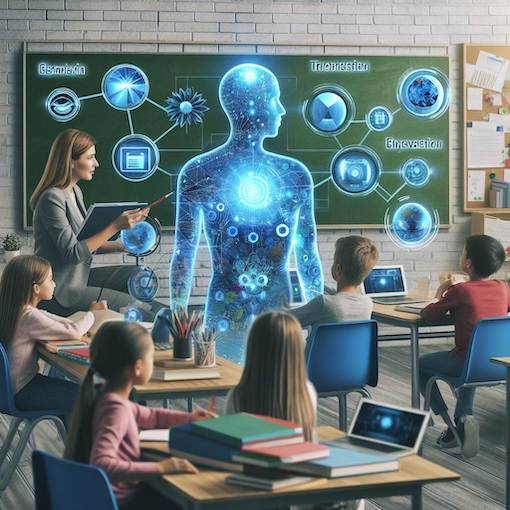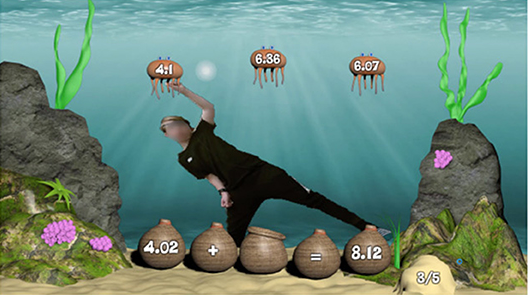Empowering Educators with AI: Revolutionizing Learning for Inclusive Classrooms
 AI offers powerful tools that have seen rapid progress in recent years in education. By harnessing new teaching technologies and learning solutions, AI is revolutionizing the way we learn and teach.
AI offers powerful tools that have seen rapid progress in recent years in education. By harnessing new teaching technologies and learning solutions, AI is revolutionizing the way we learn and teach.
AI is instrumental in:
- Personalizing teaching based on students' learning preferences, current knowledge, and skills as well as rate of progress.
- Making learning more accessible and inclusive for all students.
Generative AI (Gen AI) in education involves applying ML algorithms and techniques to create new content, such as text, images, narrated presentations, and assessment material. This approach can improve quality of instruction, increased efficiency, curated for individual learning; thus, promoting educational equity.
For instance, consider how easy it is to produce a summary of a PDF resource along with a set of comprehension questions or to integrate quiz questions into a video using a Gen AI tool. The creation of presentation slides using an AI-assistant also exemplifies Gen AI's scalability, cost-efficiency, and enormous potential in education.
Now, imagine blending these key technologies to individualize teaching based on students' learning preferences, content knowledge, skills levels and rate of progress.
Let's delve into a scenario:
A teacher aims to offer stimulating exercises to her students focusing on the math goal "Solve addition and subtraction word problems within 100." She seeks AI educational tools to improve learning outcomes and enact interventions that engage and help all the students to succeed.
She requests an AI-assistant with natural language capabilities to create worksheets with math problems tailored to children's interests, such as superheroes or favorite TV show characters, or applying examples from shopping at a supermarket or toy store. Additionally, she asks for worksheets with varying levels of difficulty in math operations to accommodate the different learning needs and levels present in her classroom.
After reviewing the worksheets and making necessary adjustments, she instructs the AI assistant to use the questions to create a math interactive quiz game with narration. Within minutes, quizzes for all her students are ready for play and learning! `
Now, envision this interactive quiz in a mixed reality mode where students become the actors, seeing themselves within the game and naturally interacting with its elements. For instance, consider the Kinems Sea Formuli game (see image below), where a student immersed in a mixed reality sea environment is presented with multiple-choice math problems. These problems are solved using hand gestures and full-body movement, creating an immersive and dynamic learning experience.

Furthermore, imagine the same game adapted to be played via an eye-tracker for children with motor impairments. This adaptation showcases the versatility and inclusivity of mixed reality educational tools, ensuring that all students can actively participate and benefit from interactive learning experiences.
Even better, all student interaction data is tracked and sent to an AI-assistant for analysis, clustering progress per difficulty level of the content provided and correlated with previous learning behavior. This allows for the creation of individualized learning paths for each student, aiding teachers in designing follow-up instructional sessions.
The scenario described above is feasible with the integration of four key technologies: Language, Voice, Vision, and Analytics, as highlighted in Holon IQ's ongoing research into AI in Education.
Currently, teachers often need to use multiple tools to achieve this learning experience. However, soon these tools will be integrated into one platform, as initiatives like the one by Kinems, Inc. are in progress.
AI educational solutions are here to stay, improving student journeys and teachers' day-to-day lives. To gain acceptance and trust, they must uphold ethical and responsible practices.
In conclusion, the integration of AI in education presents boundless opportunities to enhance learning experiences for students and streamline teaching processes for educators. As we embrace the potential of AI tools and assistants, it's crucial to remain mindful of the ethical considerations and responsibilities that come with their use.
As we move forward, let's continue to explore innovative ways to leverage AI technologies in education while prioritizing inclusivity, accessibility, and personalized learning experiences. By staying informed, collaborating, and advocating for responsible AI implementation, we can collectively shape a future where education is truly transformative and empowering for all students.
Teachers, Educational Researchers and EdTech vendors are tasked to work together to create a brighter future for learners around the world.